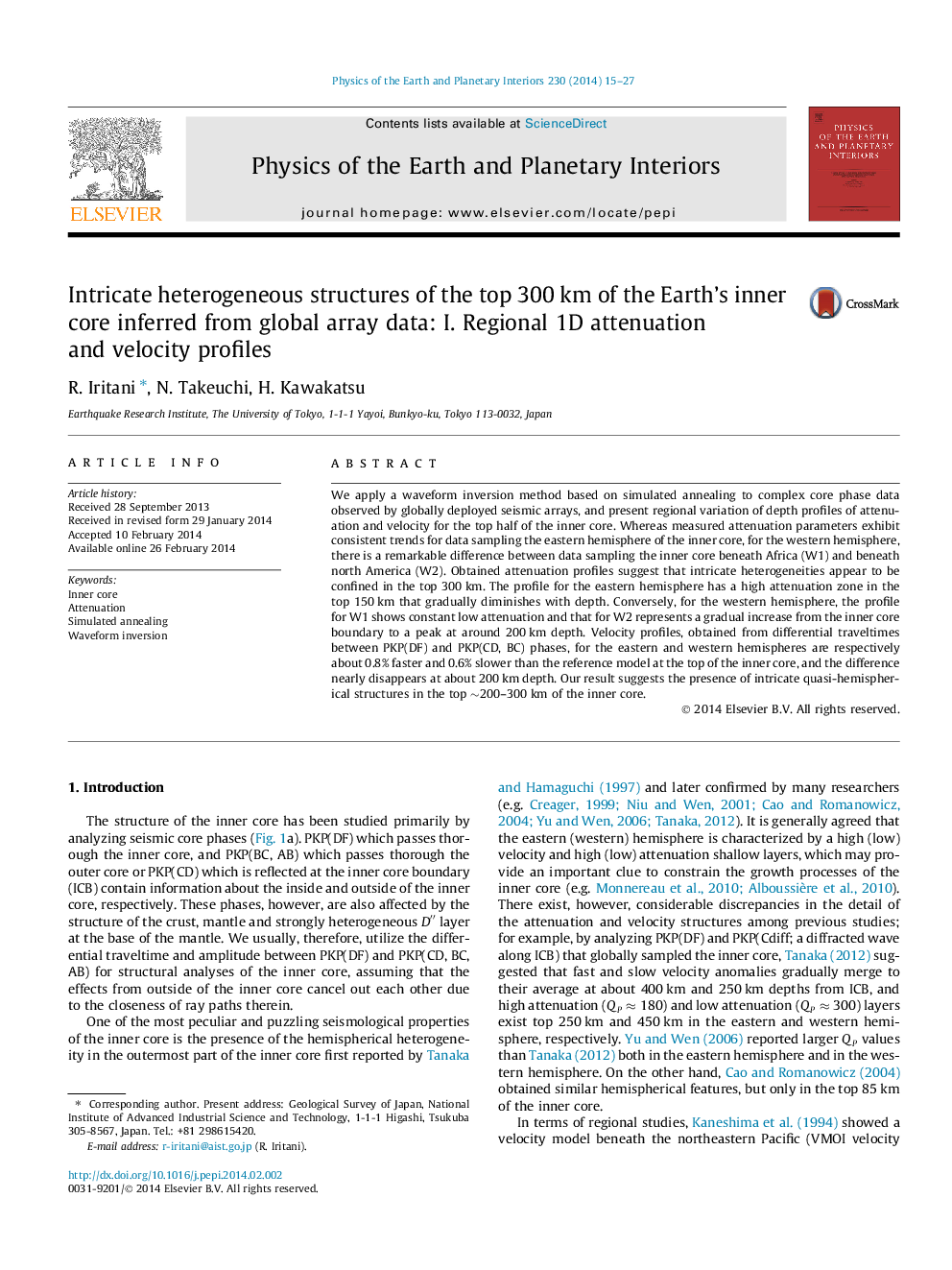| کد مقاله | کد نشریه | سال انتشار | مقاله انگلیسی | نسخه تمام متن |
|---|---|---|---|---|
| 4741559 | 1641511 | 2014 | 13 صفحه PDF | دانلود رایگان |

• We apply a waveform inversion to core phase data observed by globally seismic arrays.
• Constant low attenuation exists in the top 300 km in the inner core beneath Africa.
• The attenuation varies from the ICB to 200 km in the inner core beneath the Pacific.
• High attenuation zone exists in the top 150 km of the eastern hemisphere.
• The velocity hemispherical heterogeneity nearly disappears at about 200 km depth.
We apply a waveform inversion method based on simulated annealing to complex core phase data observed by globally deployed seismic arrays, and present regional variation of depth profiles of attenuation and velocity for the top half of the inner core. Whereas measured attenuation parameters exhibit consistent trends for data sampling the eastern hemisphere of the inner core, for the western hemisphere, there is a remarkable difference between data sampling the inner core beneath Africa (W1) and beneath north America (W2). Obtained attenuation profiles suggest that intricate heterogeneities appear to be confined in the top 300 km. The profile for the eastern hemisphere has a high attenuation zone in the top 150 km that gradually diminishes with depth. Conversely, for the western hemisphere, the profile for W1 shows constant low attenuation and that for W2 represents a gradual increase from the inner core boundary to a peak at around 200 km depth. Velocity profiles, obtained from differential traveltimes between PKP(DF) and PKP(CD, BC) phases, for the eastern and western hemispheres are respectively about 0.8% faster and 0.6% slower than the reference model at the top of the inner core, and the difference nearly disappears at about 200 km depth. Our result suggests the presence of intricate quasi-hemispherical structures in the top ∼200–300 km of the inner core.
Journal: Physics of the Earth and Planetary Interiors - Volume 230, May 2014, Pages 15–27